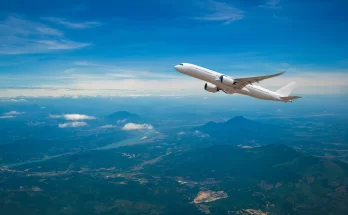During recent decades, the popularity of air travel has greatly increased. There are many different types of aircraft, including planes, helicopters, hot air balloons, blimps, hang gliders, and parachutes. In fact, it is estimated that use of air travel has doubled between the mid-1980s and the early 2000s. In addition, air travel is becoming increasingly popular as an alternative mode of transportation. Despite its increasing popularity, there are several important factors to consider before deciding to fly.
First, you must ensure that you are in good health before traveling by plane. Some types of air travel can pose a number of health risks, particularly for those with underlying conditions. It’s essential to check with your GP to determine whether flying is safe for you. If you’re travelling alone, you may also wish to take some precautions to protect yourself from illnesses and injury. While most airlines have medical advice lines that offer a range of services, it’s still best to check with your GP before booking your flight.
If you’re pregnant, you should try to stabilize your condition before traveling. If you’re breastfeeding, it’s best to get plenty of rest. And if you’re travelling with an infant, try to keep them as calm as possible by breastfeeding or offering them a pacifier. Infants can also travel on airplanes without any problems, but they should wear a seat belt low around their pelvis to ensure they’re not squished. Finally, some airlines have restrictions on the age of children who can travel with their parents. If your child is under two weeks old, they may need a medical clearance letter from your doctor to travel by air.
The airline industry is facing a tough time right now. Staff shortages and the Covid-19 pandemic have affected flight crews. And while the government has provided $54 billion to airlines and the airline industry, the industry is still struggling to recruit and retain new pilots. This disruption has also damaged their talent pipeline. In addition to these issues, airlines are experiencing difficulty hiring and bringing back more planes. The lack of pilots has made the industry’s workforce uncompetitive, and the economy has suffered as a result.
Despite the challenges faced by airlines, their technological development has helped make flying more accessible to more people than ever before. In 1958, airline passengers surpassed the numbers of ocean liners for the first time. This unprecedented growth was the result of new technology and the increased sophistication of aircraft. As a result, aviation continues to be a popular means of transportation for many people around the world. Today, you can take advantage of air travel from afar.
While air travel has become the dominant mode of transportation for international travelers, competition is increasingly fierce in many regional markets. The advent of low-cost carriers (LCCs) has expanded the reach of aviation. In the 1970s, Southwest Airlines pioneered low-cost flying in the Texas Golden Triangle. It served cities like Dallas, Houston, and San Antonio. Since then, LCCs have expanded their services across developed and emerging markets. Increasing air travel prices in developing countries have led to the emergence of numerous LCCs.



